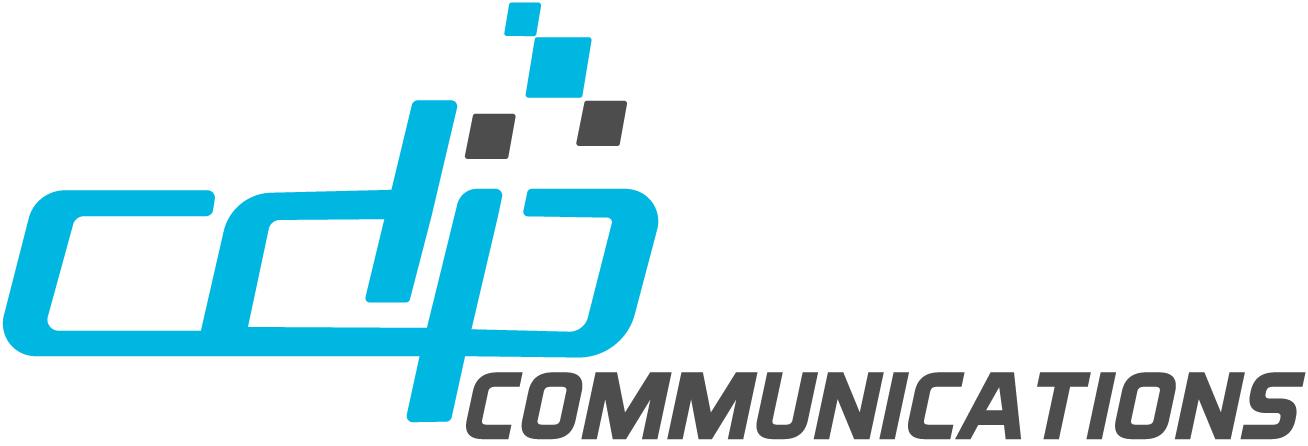Introduction
The voices and experiences of individuals with disabilities are central to the connection and the standards created by W3C, ISO Committees, and accessibility advocacy groups and regional and national laws. This article explores the interconnected landscape of entities working towards inclusive design and accessibility standards. We will delve into the roles of influential organizations, committees, lobby groups, and lawmakers. This includes the World Wide Web Consortium (W3C), the International Organization for Standardization (ISO) committees, the PDF Association, the International Association of Accessibility Professionals (IAAP), while emphasizing the importance of including individuals with “lived experience” in these groups. The focus of this article will be on accessibility for digital content on the web and in documents.
The Power of Lived Experience in Accessibility Advocacy
Recognizing the value of lived experience, the accessibility community emphasizes the importance of including individuals with disabilities in decision-making processes. These unique insights and perspectives foster a deeper understanding of accessibility challenges. Collaborative efforts that incorporate the lived experience of individuals with disabilities yield more effective and inclusive outcomes. After all, who better to determine what the best practices are than one who lives it.
W3C: The Power of Collaboration
The World Wide Web Consortium (W3C) is an international community of experts dedicated to developing web standards and guidelines. The W3C’s goal is to create technical standards and guidelines for web technologies worldwide. These standards are intended to keep a consistent level of technical quality and compatibility concerning the World Wide Web. Experts participate in focused work groups like the Accessibility Guidelines Working Group and the Web Accessibility Initiative (WAI).
Web Content Accessibility Guidelines (WCAG)
As a result, W3C’s initiative, the Web Content Accessibility Guidelines (WCAG), was defined. These guidelines provide a comprehensive list that when adhered to, ensure web content is accessible to people with disabilities. WCAG’s development process is iterative and involves extensive and organized collaboration among stakeholders, including accessibility experts, developers, and end-users. By incorporating feedback and addressing the many emerging challenges, WCAG standards have to evolved over time.
ISO Committees: Unifying Global Standards
The International Organization for Standardization (ISO) plays a pivotal role in developing global standards across various industries, including digital accessibility. ISO committees, such as ISO 14289, focus specifically on accessibility standards. ISO 14289, also known as PDF/UA, is a standard for creating accessible PDF documents. These committees bring together experts from different countries, working towards harmonizing accessibility guidelines on an international scale. By establishing consensus-based standards, ISO committees promote consistency and compatibility in digital accessibility efforts worldwide.
Unlocking Accessible PDFs: PDF Association
Creating accessible PDF documents is crucial for ensuring information is available to everyone. The PDF Association collaborates to define standards and best practices for the PDF and to advance accessible PDF standards. The the PDF Association provides a platform for industry leaders, developers, and users to exchange knowledge and best practices. Their efforts help organizations create and distribute accessible PDFs, making information accessible to individuals with disabilities.
Matterhorn Protocol
To promote PDF/UA, the PDF Association’s PDF/UA Technical Working Group defined a comprehensive set of accessibility guidelines called the Matterhorn Protocol. It consists of 31 checkpoints, encompassing 136 failure conditions that align with the file format requirements specified in PDF/UA-1. Among these failure conditions, 87 can be determined through software analysis, while 47 typically require human judgment. By following these checkpoints, PDF creators can enhance the accessibility of their documents, making them more inclusive and user-friendly for individuals with disabilities.
IAAP: Empowering Accessibility Professionals
The International Association of Accessibility Professionals (IAAP) plays a vital role in fostering expertise and promoting best practices in digital accessibility. IAAP offers certification programs that validate accessibility knowledge and skills, empowering professionals to champion inclusivity. By bringing together a global community of accessibility experts, IAAP fosters collaboration, knowledge sharing, and advocacy for accessibility in various industries.
Beyond the Core: Additional Accessibility Advocacy Groups and Lawmakers
While the entities we have explored are focused in shaping digital accessibility standards and best practices, numerous other advocacy groups and lawmakers contribute to the cause. These entities advocate for inclusive design, drive legislative initiatives, and push for policies that prioritize accessibility. Their collective efforts raise awareness, drive change, and ensure that digital accessibility remains a focal point on the global agenda.
Notable advocacy groups in Canada are: Barrier-Free Canada and the CNIB.
Barrier-Free Canada:
Barrier-Free Canada is a grassroots disability advocacy organization that works to promote accessibility and influence legislative changes in Canada.
CNIB:
The CNIB (Canadian National Institute for the Blind) engages in lobbying efforts to advocate for the rights and needs of individuals with vision loss in Canada. They actively communicate with government officials, raise awareness about accessibility issues, and provide expertise to shape policies and regulations. The CNIB’s lobbying aims to improve accessibility standards, address challenges faced by the blind and visually impaired community, and create a more inclusive society for individuals with vision loss in Canada.
Focusing on ADA and Section 508 in the USA, here are several prominent organizations that actively advocate for accessibility and compliance (in no particular order):
National Federation of the Blind (NFB)
The National Federation of the Blind (NFB) is a prominent advocacy organization in the United States dedicated to improving the lives of blind and visually impaired individuals. Founded in 1940, the NFB works tirelessly to promote equal opportunities, independence, and full participation in society for blind people. They advocate for accessibility, education, employment, and civil rights, challenging misconceptions and breaking down barriers that hinder blind individuals from reaching their full potential.
Accessibility Professionals Association (APA)
APA is a professional association that promotes accessibility and provides resources, education, and networking opportunities for accessibility professionals. They actively advocate for compliance with ADA Section 508 and other accessibility standards.
Partnership on Employment & Accessible Technology (PEAT)
PEAT is a multi-stakeholder initiative that focuses on promoting accessible technology in the workplace. They actively advocate for compliance with ADA Section 508 and work to improve the accessibility of workplace technology and digital tools.
American Association of People with Disabilities (AAPD):
AAPD is a leading cross-disability advocacy organization in the United States. They actively promote accessibility and advocate for compliance with ADA Section 508, focusing on ensuring equal access to digital content and technology for individuals with disabilities.
At a global level, organizations like the World Institute on Disability and the G3ict promote accessibility and inclusion:
World Institute on Disability (WID)
World Institute on Disability (WID) is a nonprofit organization that advocates for the rights and inclusion of individuals with disabilities. They actively work to advance accessibility and promote compliance with ADA Section 508 through policy advocacy and collaboration with various stakeholders.
Global Initiative for Inclusive Information and Communication Technologies (G3ict)
G3ict is an international organization that advocates for the rights of persons with disabilities and the promotion of accessible and inclusive ICT (Information and Communication Technology). They actively engage in policies to promote the rights of persons with disabilities through technology.
The Decision-Making Process: Collaboration, Research, and Best Practices
As mentioned, the establishment of accessibility standards involves a multifaceted decision-making process. Today, collaboration among experts, stakeholders, and end-users is what ensures diverse perspectives are considered, and put into play. Extensive research, evidence-based practices, and real-world testing are what propel the ongoing successful development of these standards. Stakeholder feedback, public consultations, and ongoing refinement are seen as crucial to ensuring that accessibility standards evolve to meet the needs of people with disabilities, and as technology evolves.
Interconnections and Collaborative Efforts: Paving the Way for Inclusion
The entities discussed in this article are not isolated actors; they collaborate and align their efforts to maximize impact. Collaborative projects, knowledge-sharing initiatives, and joint advocacy campaigns strengthen the foundation of digital accessibility. These interconnections pave the way for unified standards, shared resources, and collective progress toward creating a truly inclusive digital landscape.
Conclusion
In the collaborative landscape of digital accessibility, the inclusion of individuals with lived experience is pivotal. The voices and experiences of individuals with disabilities are central to the connection and the standards created by W3C, ISO Committees, and accessibility advocacy groups and regional and national laws. These groups recognize the power of incorporating diverse perspectives to drive inclusive design and accessibility standards. By actively involving people with disabilities in decision-making processes, these entities ensure that accessibility guidelines and policies address real-world challenges. Let us continue to prioritize the voices and experiences of individuals with lived experience, forging a path towards a truly inclusive digital future for all.
Additional Related Content:
For a quick reference on digital accessibility terminology and resources see the article: Digital Accessibility Terminology
For a quick reference on digital accessibility laws and compliance standards, see the article: Compliance Standards & Laws.
About CDP…
CDP Communications Inc. provides software that creates compliant Universal Accessible documents, enables print data stream transformations, secures the archival/retrieval of print documents, and compares print data stream files, in a fraction of the time that a manual QC process would take.
CDP has specialized in developing software solutions for Independent Software Vendors, Original Equipment Manufacturers, Service Bureaus, and Developers since 1984 and it has continually evolved its software and added to its catalogue to support the ever-increasing demands for printing and information solutions. Need software to remediate documents or ensure accessibility and compliance from creation? We’ve got your back there too!
Many of the biggest companies across numerous industries trust CDP’s solutions. Since 1984 we’ve been leaders in the technology and toolsets that drive winning approaches, saving time, money, and effort. Not to mention promoting reliable accuracy and compliance.
To learn more about ADEPT UA and other CDP Communications products, please visit our website or contact us directly at renewals@cdpcom.com.




